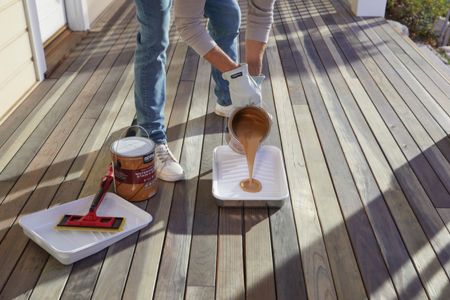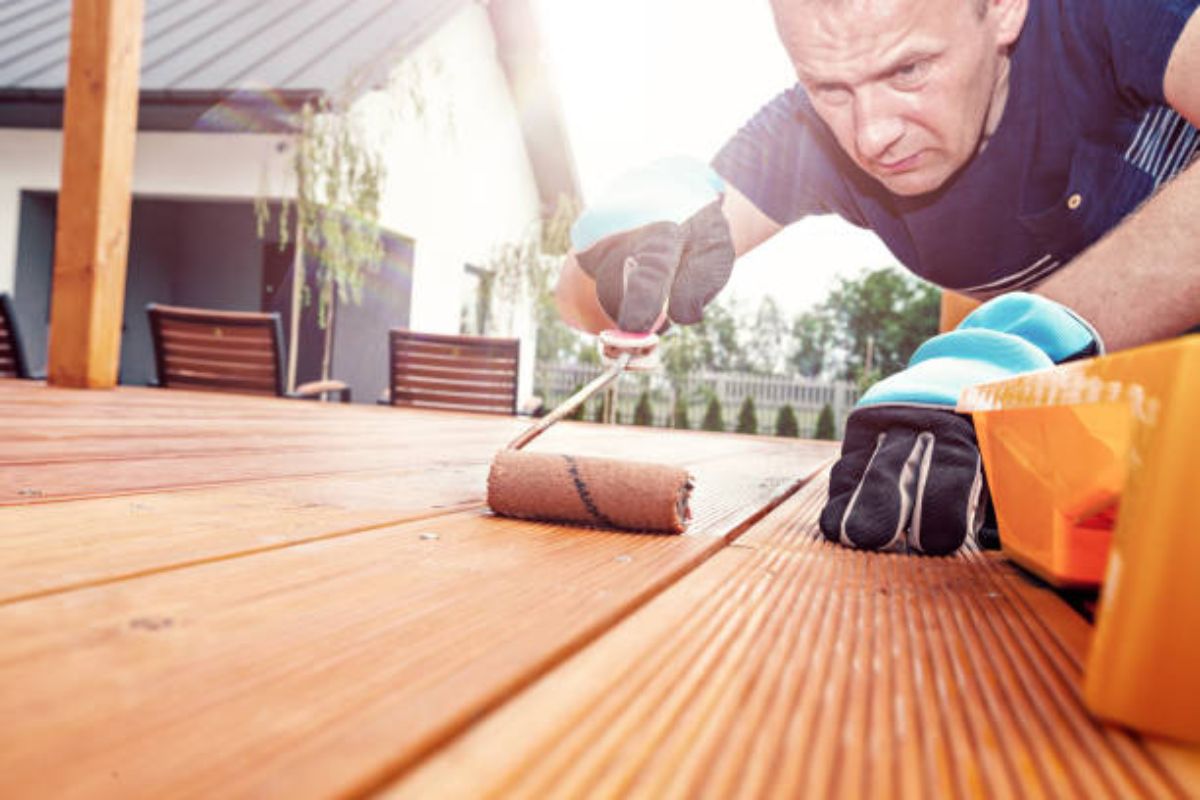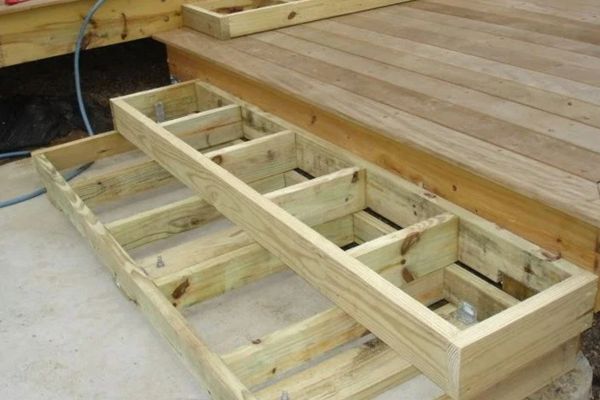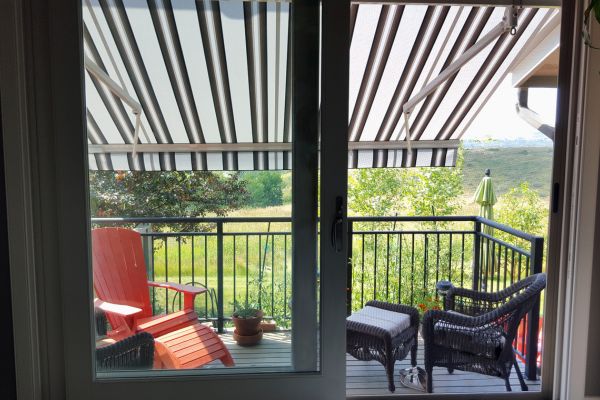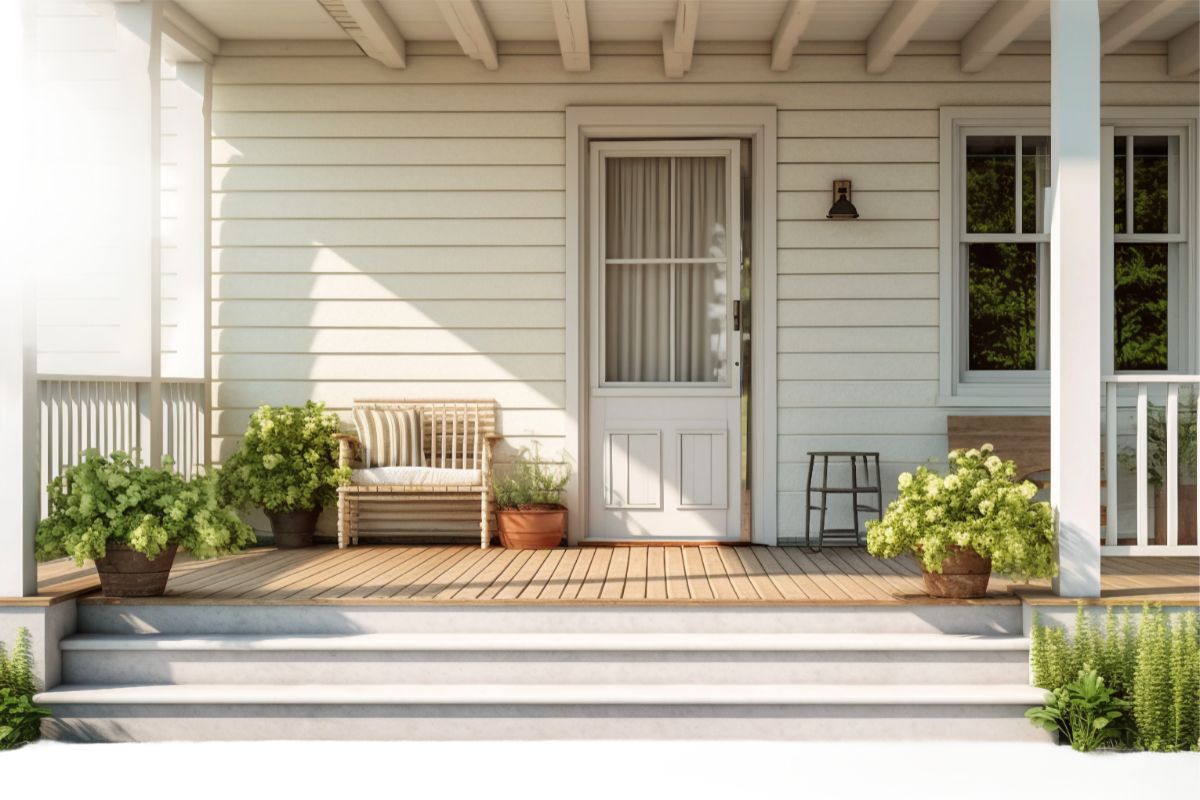Protect your deck in winter with these essential tips. Learn about sealing, proper drainage, snow removal techniques, and choosing covers to prevent damage and keep your deck in top shape for spring.
For your winter deck preparation, you must examine the deck’s surface as well as its underside to determine whether it can withstand ice and snow in order to assess its condition. Let’s take a look at some common problems to look for in order to prevent the negative effects of the cold months to come.
Inspect Your Deck

When inspecting the entire deck surface, keep in mind that weathered or warped boards are distinct from damaged boards. Regardless of whether you consistently winterize a deck, a hardwood deck will age over time. Until it becomes structurally unstable, the aging of the wood is nothing to worry about. The deck boards’ slight warping can be ignored. When they begin to crack, it is time to remove them and replace them.
When assessing the deck’s quality, walk across it. Take note of how you feel walking on the boards. Are they hard or spongy, or does it have enough strength? These symptoms indicate that a larger problem is affecting the majority of your deck’s surface; most likely, the structure beneath it is damaged. Almost always, the presence of spongy deck boards indicates that it is time to replace your deck with the best deck material for snow.
Fix Damaged Boards

While surveying the damage to your deck, start with the surface. Deck popping in cold weather happens frequently. Your decking can be seriously damaged by things like water trickling from a tree or eave onto a single spot or a plant holder, leaving a buildup ring. In order to determine whether the damage is restricted to a single location or if it affects multiple boards, you will need to examine the rest of the deck.
If the damage is limited to the surface boards of the deck, you can take out the damaged boards and replace them with new ones. Make sure to check under the boards when you lift them up to ensure that the damage hasn’t spread to a place you can’t see.
Replace Paint or Peeling Stains
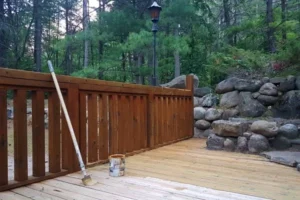
Pulling a strip of tape up across the deck is one way to check for peeling paint or stain. If the wood coating stops adhering, the tape will lift it up. Peeling paint and stain isn’t a big deal on its own and can be fixed by a homeowner. During the wet seasons of winter and spring, the possibility of water or mold entering the wood beneath peeling paint and stain is a problem.
Repainting or restaining your deck requires sanding or scraping away the previous layers. Leaving the current coat on will prevent the new product from adhering. After removing the previous coat of paint or stain, you should choose something with a finish that repels water, regardless of the look you want to achieve. If your deck is large, you might want to hire a general contractor.
Identify Weak Railings

The railings on your deck ought to be rigid. If you can wiggle it back and forth, the areas where the screws and nails hold it in place have probably softened. You should take the railing down if it is loose to check for hidden wood damage. If the joint between the railing and the deck is not held securely, the wood on the deck could also be damaged. Before attempting to repair the railing, check to see that the damage does not extend further into the deck.
Assess Damage to Deck Posts
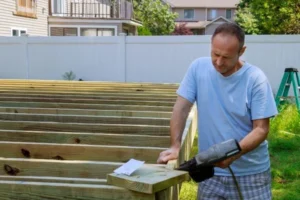
As you prepare your deck for the winter, you may notice that the posts that support it are beginning to rot. Sadly, it is very difficult to repair damage to deck posts, and in most cases, you will need to take down the entire deck. When you discover damage to a post, you should either replace the deck or make major repairs. If damaged posts move or collapse, your deck will move or fall on its own.
To avoid damaging your posts, clean the area around them so that the cement can be seen. If necessary, add additional cement to create a slope that allows dirt and water to be reabsorbed by the post and returned to the ground.
If you want to avoid having to worry about the wood on your deck rotting, composite decking might be your best option. For many designs that are both durable and attractive, composite decking is an excellent alternative to hardwood.
Examine the Joists for Rot
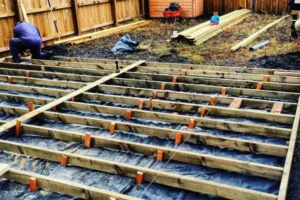
Joists are more likely than other parts of the deck to develop rot and mildew because they are not exposed to direct sunlight. The sun can’t get under the deck to dry out the moisture that builds up around the screws and nails that hold the joists together because the sun can’t get there. Additionally, you are less likely to notice termite damage unless you frequently walk or crawl beneath your patio, porch, or deck.
Like post damage, joist issues indicate that your deck needs to be replaced. Joists support the entire surface of the deck; you cannot replace them without dismantling the rest of the deck. The best joists are made with high-quality decking material.
Cover your Deck
This last step—covering your deck with a tarp—is optional and is not required for all deck types. A tarp can be one of the best deck protection options if you know you won’t use your deck for several months and want to keep moisture from collecting on its surface.
Choose a heavy, non-porous tarp or a winter deck cover for this to work. You should try to find a tarp similar to what you would use to cover a pool in the winter. A tarp can help keep mildew from growing and prevent certain deck materials from warping over time.
If deck repair is needed, contact Newton Deck Builders
Unsure whether your deck is safe or needs repairs? If you live in the Newton and Natick area, call the deck and porch experts at Newton Deck Builders in Newton & others area in MA. They can advise you on stains and materials that will keep your deck structurally sound through the harsh winter weather. Talk to us and check out what we can do to winterize your deck!
